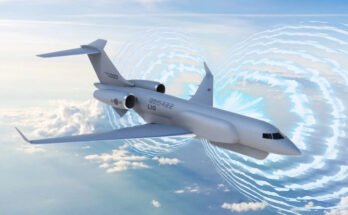By Richard Sterk, Electronic Systems Analyst, Forecast International.
The U.S. Department of Defense’s official nomenclature equipment identification system is formally known as the Joint Electronics Type Designation System (JETDS), although it is more commonly called the “AN” designation system, referring to the days when AN stood for “Army/Navy.”
The first three letters following the “AN/” usually indicate:
- The platform on which the equipment is installed.
- What type of equipment it is.
- The function, purpose, or application of the equipment.
The (V) sometimes placed after a designation means that there are variable configurations or models of that particular system, such as the AN/SSQ-53B(V) and AN/SSQ-53F(V). The various configurations would usually be listed as A, B, C, and so forth. An (X) usually indicates that the system is in initial development. A number in parenthesis following the designation, such as AN/SSQ-53F(1), indicates the number of variants of that particular configuration for that specific series or family of equipment.
Note that Forecast International generally does not use the AN/ prefix in equipment designations because it confuses alphabetical listings, and because some of our products are sold electronically, in which case the prefix could complicate the word search capability.
First Letter – Installation/Platform/Environment:
A = Piloted Aircraft
B = Underwater Mobile/Submarine
C = Cryptographic
D = Pilotless Aircraft/Carrier
F = Fixed Ground
G = General Ground Use
K = Amphibious
M = Mobile (Ground)
P = Portable
S = Water
T = Transportable (Ground)
U = General Utility (Multiple)
V = Vehicular (Ground)
W = Water Surface and Underwater Combined
Z = Piloted-Pilotless Airborne Vehicles Combined
Second Letter – Type of Equipment:
A = Invisible Light, Heat Radiation
B = Communications Security
C = Carrier – Electronic Wave/Signal
D = Radiac
E = Laser
F = Fiber Optics
G = Telegraph/Teletype
I = Interphone and Public Access
J = Electromechanical or Inertial Wire Covered
K = Telemetering
L = Countermeasures
M = Meteorological
N = Sound in Air
P = Radar
Q = Sonar/Underwater Sound
R = Radio
S = Special or Combination
T = Telephone (Wire)
V = Visual/Visible Light
W = Armament (peculiar to armament not otherwise covered)
X = Facsimile to Television
Y = Data Processing or Computer
Z = Communications
Third Letter – Purpose/Function/Application:
A = Auxiliary Assembly
B = Bombing
C = Communications Receiving/Transmitting
D = Direction Finder/Reconnaissance/Surveillance
E = Ejection and/or Release
G = Fire Control or Search Light Directing
H = Recording/Reproducing
K = Computing
M = Maintenance/Test Assemblies
N = Navigational Aids
Q = Special or Combination
R – Receiving/Passive Detecting
S = Detecting/Range and Bearing Search
T = Transmitting
W = Automatic Flight or Remote Control
X = Identification and Recognition
Y = Surveillance (Search, Detect, and Multiple Target Tracking) and Control (Fire and Air Control)
X = Secure
EXAMPLE: AN/SSQ-53F (a U.S. sonobuoy)
AN = Army/Navy (a U.S. system)
S = Water
S = Special Type
Q = Special/Combination
53 = The model’s design number
F = The specific configuration of the model’s design number
EXAMPLE: AN/ARC-210(V) (a U.S. airborne, multimode, UHF/VHF transceiver)
AN = Army/Navy (a U.S. system)
A = Piloted Aircraft
R = Radio
C = Communications
210 = The model’s design number
(V) = Several variants/configurations available
EXAMPLE: AN/TPQ-36(V) (a U.S. transportable, ground, counter-mortar tactical radar used for weapon location, also known as Firefinder)
AN = Army/Navy (a U.S. system)
T = Transportable Ground
P = Radar
Q = Special/Combination
36 = The model’s design number
(V) = Several variants/configurations available
To access the latest version (September 11, 2013) standard document online (MIL-STD-196F), click link here.
For 50 years, Forecast International intelligence reports have been the aerospace and defense industry standard for accurate research, analysis, and projections. Our experienced analysts compile, evaluate, and present accurate data for decision makers. FI's market research reports offer concise analysis of individual programs and identify market opportunities. Each report includes a program overview, detailed statistics, recent developments and a competitive analysis, culminating in production forecasts spanning 10 or 15 years. Let our market intelligence reports be a key part of reducing uncertainties and mastering your specific market and its growth potential. Find out more at www.forecastinternational.com




